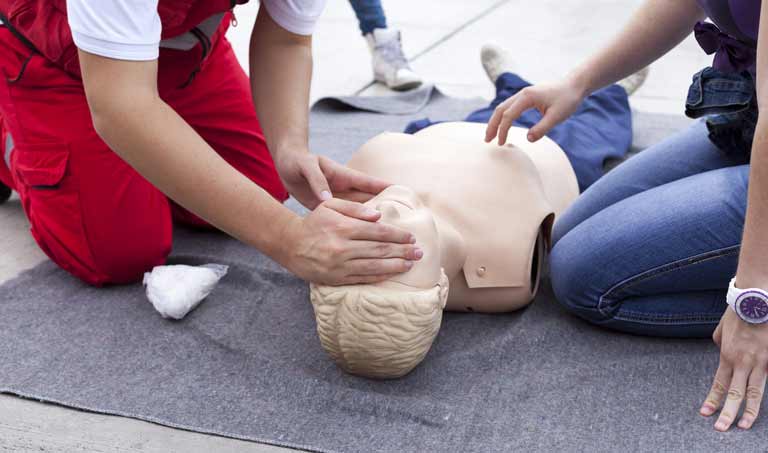Introduction
In our busy world, emergencies can strike without caution. Whether it's a small injury, a clinical emergency, or a deadly situation, knowing just how to provide first aid can make all the difference. This is where a First Aid course comes into play. Lots of people might wonder what they can gain from such training, and this post intends to shed light on that.
By joining in a First Help and CPR course, you do not just learn more about bandaging injuries or performing CPR; you furnish on your own with very useful skills that can conserve lives. So, just what will you find out in a detailed program? Allow's dive into the details.
First Help Fundamentals: What You'll Discover in a Comprehensive Course
Understanding First Aid
What is Very first Aid?
First help refers to the initial help provided to a person suffering from an injury or CPR Course Adelaide ailment up until professional clinical aid shows up. It encompasses numerous strategies and abilities varying from basic injury like lifesaving strategies like mouth-to-mouth resuscitation (Cardiopulmonary Resuscitation).
Importance of First Aid Training
Why Ought to You Take an Emergency Treatment Course?
Taking a First Help course is crucial for several factors:
- Confidence: Recognizing exactly how to react in emergencies can infuse confidence. Life-Saving Skills: The capability to carry out mouth-to-mouth resuscitation or help with choking can conserve lives. Career Advancement: Numerous careers need qualification in initial aid. Community Duty: Learning means you can aid others effectively.
Overview of CPR
What is CPR?
CPR, or Cardiopulmonary Resuscitation, is an emergency situation procedure performed when somebody's heart beat or breathing has stopped. It integrates chest compressions with rescue breaths to preserve blood flow and oxygenation till expert aid arrives.
The Structure of a Comprehensive First Aid Course
What Does an Emergency treatment Course Include?
A well-shaped First Aid and mouth-to-mouth resuscitation course usually covers the following subjects:
Introduction to First Aid Legal and Honest Considerations Scene Safety Basic Life Support (BLS) CPR Techniques Choking Relief Wound Care Management Burn Treatment Managing Shock Recognizing Medical Emergencies Using an Automated External Defibrillator (AED)Legal Aspects of First Aid
Are There Legal Ramifications Associated With Offering First Aid?
Yes, giving emergency treatment does lug lawful duties called "Good Samaritan legislations." These regulations shield people who assist others in emergencies, offered their activities are sensible and not reckless.
Scene Safety and security: The Very First Step
How Do You Ensure Scene Safety?

Ensuring scene safety includes evaluating the setting prior to approaching the sufferer:
- Look for potential hazards (web traffic, fire). Make certain it's secure for both you and the victim.
Basic Life Assistance (BLS)
What Duty Does BLS Play in Emergency Situation Situations?
Basic Life Support consists of the fundamentals of preserving life functions until further clinical assistance gets here. This area covers vital skills such as:

- Checking responsiveness Activating emergency situation solutions Performing premium upper body compressions
Advanced mouth-to-mouth resuscitation Techniques
What Are Advanced Techniques Covered in Mouth-to-mouth Resuscitation Courses?
Advanced techniques might consist of:
- Two-rescuer CPR Use of obstacle gadgets for rescue breaths Special considerations for infants and children
Choking Alleviation Techniques
How Do You Assist Somebody That is Choking?
Choking alleviation includes two crucial techniques:

Wound Treatment Management
How Do You Effectively Take Care Of Wounds?
Effective injury management includes:
- Cleaning the injury with saline or clean water. Applying antibiotic ointment. Covering it with clean and sterile dressings.
Burn Treatment
What Are Effective Methods for Dealing With Burns?
Burn therapy varies by level:
Cool the burn under running water. Cover it with non-stick dressings. Seek medical interest for extreme cases.Managing Shock
How Is Shock Identified and Treated?
Recognizing shock includes seeking symptoms like light skin, rapid pulse, or confusion:
Lay the individual down. Elevate their legs unless there are injuries stopping this. Keep them calm till assistance arrives.Recognizing Clinical Emergencies
What Sorts of Medical Emergencies Must You Realize Of?
Common medical emergency situations consist of:
- Heart assaults Stroke Severe allergic reactions Comprehending these problems aids you act quickly.
Using an Automated External Defibrillator (AED)
How Do You Use an AED Correctly?
Using an AED includes transforming it on, connecting pads according to images on the tool, and complying with voice prompts carefully.
Importance of Continual Learning
Why Is Continual Understanding Important in Emergency Treatment Training?
Continuous understanding guarantees you stay upgraded on best practices and new procedures in first aid care.
FAQs Concerning Emergency treatment Courses
What Is Consisted of in a Requirement Emergency Treatment Course?- A typical training course usually covers standard life assistance, wound monitoring, choking alleviation techniques, and legal considerations.
- Most programs vary from 6 hours to 16 hours depending upon the deepness of material covered.
- Yes, upon successful conclusion of most programs, participants receive a first aid certificate, which is usually valid for two years.
- Yes! Lots of companies offer on-line courses that offer flexible learning environments while still being effective.
- Absolutely! Hands-on method is essential for mastering skills like upper body compressions and using AEDs effectively.
- Generally, there are no age restrictions; nevertheless, individuals must be psychologically experienced to learn these life-saving abilities effectively.
Conclusion
Enrolling in an extensive emergency treatment course equips people with vital expertise that can save lives throughout emergency situations-- whether at home, work, or out in public rooms! From understanding basic life assistance procedures like CPR to learning exactly how to handle injuries properly or identify signs of shock-- these training courses offer invaluable training that any individual can benefit from!
As we navigate via our daily lives filled with unpredictability-- what much better method than preparing ourselves via expertise acquired from structured training sessions focused on conserving lives?
In verdict-- if you're considering using up any type of first-aid training-- never ever hesitate! Furnish yourself today with these powerful devices since preparedness genuinely makes all the distinction when every 2nd counts!